|
Teachers are influential people in student and adult lives. When we first started in education we were all inspired or impacted by another teacher that led us down the path that we are on today. In celebration of Teacher Appreciation Week, we wanted to share the stories of the teachers who helped shape us into the educators we are today. Kara:I have been very fortunate in my educational career to have many teachers that worked so hard to ensure my success. But I have two teachers that stand out to me, who pushed me in the direction of becoming a teacher myself. It was third grade. I was a very shy kid, maybe an average student, and did not have confidence in myself at all. Even at that young age, I knew that about myself. Then Mrs. Medima walks into my life. She impacted me so greatly because she SAW me. I wasn’t able to sit back and slip through the cracks because she saw me, pushed me, and believed that I was so much more capable than I believed for myself. She made such an impact in my life that I can still see her smile and her amazing ‘teacher’ outfits. ;) Every Christmas I am reminded of all that she did for me by hanging the ornament she gave me all those years ago on my Christmas tree. Many years pass and I am now a junior in high school. There was a new teacher in our high school and his name was Mr. Doust. I was in one of his classes. At the beginning of the year, class started off like most high school classes do. Lecture, note taking, quizzes, tests, etc. But as the year went on, Mr. Doust’s teaching began to change. One day walking up to class, all you saw was black butcher paper across his doorway. He had created a ‘secret’ entry to his classroom. Once inside, there were lamps, with bar tables set up everywhere…. No desks to be seen. He had set up a speakeasy in his classroom. He had created a classroom simulation for us to become immersed in what he had to teach us. Then another project we had to create videos in order to teach the class about another time period… and back then making videos was not as easily done like it is today on our phones! I remember that he challenged me and wasn’t satisfied with just rote memorization of the information (which I was really good at doing!). His style of teaching and how he interacted with us as students, as people, was different and breathed life into the high school. Was it easy for him? No… Many other teachers pushed back on him and how he was teaching, but he continued because he knew it was the best thing for my classmates and I. Both of these teachers in my life impacted me greatly in different ways. Mrs. Medima taught me the beauty and necessity of seeing each student individually for who they are. She taught me the power of the love of a teacher and how that love can be a vehicle for students to move mountains, personally and academically. Mr. Doust taught me that you don’t have to follow in everyone’s footsteps and that being indiuvally you is a powerful thing. He taught me that teachers have a voice and can have individuality in their instructional delivery. He taught me that even if it’s not the ‘norm’, you need to do what is best for your students. Megan:As long as I can remember, my dream job was to be a teacher. I was that little girl that set up a classroom in her room and taught her dolls and stuffies about math, writing, and reading. My first grade teacher was someone who started my love of learning and teaching. Mrs. Parks was kind, compassionate, and always greeted her students with a warm smile. Above her love for her students she was someone who saw each student for who they were and respected each student's unique personalities. Mrs. Parks was the teacher that tried new strategies, incorporated activities, and made learning fun. Moving forward to my student teaching year, I asked Mrs. Parks if she could be my mentor. She was in her last year of teaching and I wanted to learn from a teacher I admired all these years. In that year, I learned more than any textbook could offer. Mrs. Parks taught me to love my students the way she did with me all those years ago by having conversations with them, listening to them, and then teaching them. Mrs. Parks taught me that building relationships with your students was the foundation of being an outstanding teacher. Now almost 30 years later she is still my cheerleader, and for that I am so grateful. We share these stories to remind you of the power of an educator. Being an educator is no easy task. And in the past few years, the job seems almost impossible at times. But remember, the students that are in front of you today are being molded and shaped by YOU. They are looking up to YOU. They are learning from YOU. Those students are depending and trusting in YOU. And even when they may not always show it, those students care for YOU. There is not a more powerful job in the world than that of an educator. "A teacher affects eternity: he can never tell where his influence stops." –Henry Adams
0 Comments
IntegratED Classroom Learning Experiences with TechnologyIntegrating technology has been a hot topic for quite some time. If you search you will find many different PD books, articles, and tips and tricks on the subject. All of this can be very overwhelming if you're someone that isn’t as “tech savvy” as you think others might be. I’m here (Meg) to tell you I was that person. When I first was introduced to “THE DRIVE” for google I was terrified I would lose all of my desktop folders full of all the goodies. I put up a wall that stopped me and my students from this new learning. It took me some time and some navigating around a few learning curves but now I work in nothing but the drive. You could say it's my life. And now I am a one to one classroom, Google certified and I am always on the lookout for new ways to incorporate technology into my classroom and my personal life. Our Live by Tips and Tricks
IdeasThere are so many different ways that you can incorporate technology into your classroom to give students an experience they will remember. Here are just some of the ideas/apps we use frequently throughout the year. Do you have some favorites? We would love to hear them! Comment on our blog or message us on any social media and we will be sure to shout you and your idea out!
NearPod: Create your own learning pathway for your students by adding tons of different multimedia to a very easy to use slide deck. You can choose to put this as student lead or teacher lead. Check out the Mrs. Everest preview Kara created during our landforms unit. Google Earth/Maps: Are you learning about a battle? What about an ecosystem? A different culture? Before your lesson, direct your students to a place on the earth for them to explore and ask questions. You can go just about anywhere in the world!
Green Screen: Green screen projects are a great way to integrate technology into your classroom, no matter the grade level! Here are some ideas that can be used as is or modified to fit whatever grade level or subject you teach. Using a green screen with video allows you to replace the background with any image or video of your choice. You can transport yourself anywhere in the world, and beyond, with a green screen. Using any recording device the person filming stands in front of a large green screen and records their video. After the video is recorded your students can use an app like PicCollage, iMovie or DoInk to add your own video or image.
If you want more specific ideas on how to incorporate a green screen into your learning experiences, click here to read our article, 10 Green Screen Ideas for the Classroom. Skype: Bring in an expert, explorer, or veteran to you! Using the platforms of Skype, Zoom, Google Hangout, you can easily bring in people to interview. This is a great way to connect students to others in their community/world and to hear first hand about different real life experiences. National Geographic has a place where you can book an explorer to talk with your students. Who could you “bring in” to give your students an experience on interviewing and learning more about your topic? This is also a great way to integrate different reading, writing, speaking and listening skills by having them prepare questions for guests. After visiting and interviewing your guest, students could use this information to add to a research paper or presentation for a final assessment at the end of the unit. Digital Escape Room: These are a great way to get your students to use their problem solving skills, collaboration, learning content and provide some game play. You can create your own or use some that are already made to fit your content. Check out Matt Miller’s blog for 40 Free Digital Escape Rooms and a step by step guide on how to create your own.
IntegratED Classroom Learning Experience: Visual ArtsClassroom learning experiences are powerful, effective, engaging, and did we mention fun! :) Classroom learning experiences can also take on many different forms. Last week we discussed classroom learning experiences that were movement focused. If you missed that blog, go check it out! This week we are focusing on the arts. Now, if you are anything like me (Kara), you hear the word art and immediately start to panic. But don’t worry! Perfection is not the goal. This art is meant to let students express their thinking, their learning, their creative side. We want to show you how the power of classroom learning experiences and the power of the arts can come together and create unforgettable learning in your classroom. IdeasWriting Storyboards: Provide students with a set of squares to plan out their story using drawings. Some students have a very difficult time writing down their story in order. Having students draw their story in order will provide them a visual support to verbally tell their story, get their story all out on paper, and give them a tool to look back on when it's time to write. Picture This Window: Have students draw a picture on paper slightly longer than a 5x7 frame. Use a 5x7 frame to put their picture into a window. Provide students with different multimedia (crayons, chalk, markers, etc). This visual activity has many different uses. For example, you could have students write a poem to their picture, create a story through a different perspective of someone looking into the window, or create a visual to go with a research paper like a habitat. Symmetry Face: Take a picture of your students and print them in 5x7 or 8x10. Cut their face in half and glue it to a white paper. Have students draw the other side of their face. Build it: In science your students have been learning about atoms and molecules or maybe different landforms. To show understanding, have students create a model using playdough, clay, plaint or other media. History Connection: Take a look at some of your social studies standards. In our state standards it asks for 2nd graders to recognize and describe culture influences people including Indigenous Tribes of Wyoming. This would be a great opportunity to look at the different drawings, clothing, pottery etc. Then have students create their own piece. Art Collaboration: Put students into small groups and give them different art supplies. Ask the groups of students to work together to create some type of art piece. This could be centered around what you are learning in class or free creativity. The point of this activity is to have students create together. You are looking for students who are listening to each other, giving their opinions, sharing, and being flexible. This is a great way to practice those soft (interpersonal) skills. Classroom Tip: Try to use and provide different types of media for your students to create with. For example, give them paper, crayons, paint, watercolor, chalk, etc. Give them the tools to explore and find what they love. Remember every student is going to react differently to creating, give them time, the tools, and space to show you what they can do. Visual arts can change the entire perspective of a student’s day in the classroom just by being supportive and encouraging their unique ideas. It also could knock down a barrier for them to understand vital content. As teachers we ask our students to produce a certain answer on standardized tests, a form of writing, a set answer in math, and so forth. Integrating the visual arts into their day provides some of those students the outlet to be themselves or a pathway to understanding content they might not have understood through a text. As teachers we need to become excited about learning in different ways and let students have more control of their knowledge and how they want to express it.
IntegratED Classroom Learning ExperiencesHow many of you have seen the cute videos on social media of little babies bouncing or jumping to the beat of a song? They are so cute! But even more importantly, even as babies, they are reminding us the importance of getting up and moving! As humans, we are meant to move! Movement is natural for children, no one has to teach them to move to a beat of a song or jump up and down when they are excited. Susan Griss says “Children naturally move. They react to and explore their world in a physical way. When they arrive in school, they are fluent in this nonverbal, physical language”. By fostering their movement and integrating it into their learning, children are going to thrive. Students will be able to take something that comes naturally to them and apply it to their learning of the content, giving them the opportunity to express their understanding of the content in a way that makes sense to them. Movement IdeasPlot: In the primary grades students are asked to understand the plot of the story with character, setting, and plot. After reading a story with a distinctive plot students map out their path on paper to show the beginning, middle, and end. They move through each section with different movements/poses. Life Cycle: After students have learned the life cycle stages of an animal or plant, have them create different movements to show each stage with their bodies. Encourage them to be big/small tall/short. For example, if they are showing movements for a life cycle of a flower a seed would be close to the ground, bodies in a ball. Their flowers might be tall, reaching for the sky, making blooming motions.
Movement Math: Have students use their bodies to show different shapes. Students use their feet to draw the shape on the ground. Clock Movement: Students use their bodies to show different times on an analog clock. Story Problems: Students could ‘act’ out the story problems to help solve. Addition vs. Subtraction: Students could have different moments/action for addition and subtraction to help them differentiate between the two and to help them pay closer attention to the symbols. Vocabulary Movement: Have students stand up and use their bodies to act out different meanings of words. Habitat Movement: Are you learning about different animals? Have students act out their animals in their habitat. Topic Movement: Let’s say you are learning about matter. Have your students move like a solid, liquid, or gas. This not only gets them up and moving but provides you with a quick idea of what students might still need clarification. Writing Movement: Have students create different movements for parts of their writing. For example, If you are teaching opinion writing, the introduction sentence, three reasons, and close would each have a movement. Song & Dance: So many of us educators have little songs or jingles to help students remember different content. Put simple little actions to that song/jingle (no need for Broadway level choreography 😉) and you will be amazed at how that will stick with the students!
Benefits of Integrating Movement
If we really want students to learn we must connect the material with their memories so that it sticks.” -The Playful Classroom Teachers are ArtistIntegrate: To combine (one thing) with another so that they become a whole. Combine, merge, unite, blend (Painting created during our Disrupting the Norm conference session.) Integration. When you look up the word integrate, the term is defined as to bring together, incorporate (parts) into a whole; to unite or combine. When I think of these words, my mind begins to imagine an artist. Artists are masters of mixing, combining, and blending together different colors, materials, and textures to create their masterpieces. They are meticulous and purposeful with their use of colors and materials. Every brush stroke has a purpose and intention. Now you may be wondering what artists have to do with teaching? In our opinion, a lot. We believe that teachers are artists. They bend, mold, and create not with clay and paintbrushes, but with content, students, materials, and resources. Teachers create masterpieces called learning every single day! Teachers are creative and imaginative people who have been stifled and put into a box for too long. We are wanting to bring back teachers’ creativity, fun, and excitement through multi-level and multi-subject integration, showing them that with integration their masterpieces of learning will be amplified tenfold. It is important to remember that integrating content can take many forms. Many times when others hear of integration within the realm of education they automatically think of technology or a component of the arts. But integration can be and is so much more than that! Integrating content in education can and should include technology and arts, but also science, social studies, math, reading, writing, and grammar. It is integrating the hard and soft (interpersonal) skills students need to be successful in the classroom and in life, such as collaboration, problem solving, analyzing information, communicating with others, and using their creativity to do something amazing. Another important thing to note about integrating content in the classroom is that it has to be purposeful. Integrating content is not pulling a non-fiction book for a read aloud and calling that integrating science or social studies. Just as an artist has a purpose for every brush stroke and color choice, so does content integration. It takes thought, effort, and planning to ensure that content integration is being purposefully and effectively, but the time spent planning and ensuring that is being done, will be time well spent and time that will be used more effectively while delivering instruction. Now, you may be wondering how is that even possible? Well… that is what we are here to help you with. We want you to see the power of full purposeful integration in the classroom. We want you and your students to experience the excitement, the engagement, the fun, and the effectiveness of purposeful multi-subject integration in the classroom. If you have read this through so far, that last paragraph may have you scratching your head and rocking your world possibly a little bit. Questions are probably flooding your head. Thoughts of “That can’t be done” are surfacing in the back of your mind. You might even be thinking about putting this book down. But we are here to encourage you and to show you that it can be done. We are not here to walk along a path that has already been created for us. We are here to disrupt the norm in education. We are here to make our own path. We are here creating our own pathways because we have students who live in a world completely different from what we grew up in and in a world that is ever changing, and ever so quickly. We are here to disrupt the norm in education that we have all grown so accustomed to. Are you ready to start on your own path for your students and for yourself? Are you wanting a change? Are you ready for some disruption? Do you feel ready to get started but are wanting some more coaching and support along the way? Don’t hesitate to get a hold of us at [email protected] or follow us on any of our social media platforms; Facebook, Instagram, Twitter, @IntegratEDk12. Also, for more individualized and in depth learning on multi-subject integration in the classroom, Check out our IntegratED cohort starting August 2022! LIMITED spots will be available!
* Disrupt: To Radically Change *The last two weeks you have been working hard. You have been working on your mindset and getting that bar raised off the ground. You did it! Now you’re in mid-lift and it is time to push the bar to its maximum height! It is time to disrupt what you thought was possible to create a new norm and a new expectation for yourself! Let’s elevate that bar to its highest point! This week we are digging into the third level of our IntegratED Framework; Level 3: Disrupting the Norm. This level is what we strive for in our instruction and what we believe will showcase integration at its pinnacle. This level received its name “Disrupting the Norm” for a very distinct purpose. As we were developing the framework and the levels for our framework, this was the level that we started with. This is the level that we wanted to strive for and that we want other educators to strive for. When you define the word disrupt, one definition that is given is ‘to radically change’. If that doesn't fit our mantra we don’t know what else does! This level is disrupting, radically changing (education), because it is here that we are breaking all ‘norms’ that we have grown accustomed to knowing, performing to, and accepting in the world of education. It is in this level that “reading block”, “writing block”, “science block”, “math block”, “social studies block”, no longer matter and/or exist. It is here that all subjects are taught and engaged in through the IntegratED Workshop. It is at this level in which students are engaging in multiple subjects, standards, intelligences, and skills at a time. It is at this level in which students are flowing between different subjects throughout the day. It is in this level in which we see behaviors lessen, inquiry heightens and scores rise. Science, Reading, Writing, Math, and Technology in this Unit It is at this level in which teachers are truly becoming a guide to their students’ learning. It is at this level in which students are highly engaged, motivated, excited, and truly engrossed in their learning. This is the level that we feel teachers can truly let their creativity, flexibility, and fun shine in their lessons and/or unit. Our whole goal of the IntegratED framework is to provide a guide for teachers to help condense what is constantly being put on our ever-filling plate spinning act, while at the same time trying to bring back a teacher’s love of teaching and a student’s love of learning through creativity and learning experiences. This level is the epitome of how we feel we can help make that happen. Now, we will tell you that in this level of “Disrupting the Norm” planning and forethought are required. Work will need to be put into creating a unit at this level and magnitude. But we can also tell you that the outcomes, involvement, understanding, growth and experiences that accompany the planning for this level will surpass your expectations and excite you as an educator. “If you do nothing it feels safe, but everything stays the same. If you do nothing, there is less to experience, less to love, and less to learn.” -Yamada, Trying To help you get started in your IntegratED teaching, we want you to have a resource that we use to help us plan…the IntegratED planner! Click on this link and it will take you to a free sample of our IntegratED planner that you can download and use right away to help you get started!
Also, for more individualized and in depth learning on multi-subject integration in the classroom, be on the lookout for the upcoming IntegratED cohort starting August 2022! LIMITED spots will be available! Stay tuned for next week’s blog on Purposeful Integration!
Raising the BarYou’re in the gym, you’ve grabbed the bar, and now it’s time to start raising that bar! This week, we are ‘raising the bar’ into the second level of our IntegratED framework. In this second level of the IntegratED framework, we are Challenging the Norm. We are beginning to exercise our “muscles” that may not have been exercised recently. The muscles of creativity, flexibility, fun, and excitement! This level is wanting to grow you as an educator, showing you the possibilities and success you can have when integrating content in the classroom. When thinking of this level, we think of how your mindset is already changing. You have already committed to wanting to make a change for yourself and your students and have stepped up to the bar. Now you are challenging yourself and your students to do things that may be outside your comfort zone, pushing yourself and your students just a bit further. You may also begin to challenge other educators' mindsets on what should be considered “normal” in education. At this level, there are so many opportunities for educators and students to grow in exponential ways. In our classroom, this level is often seen as “partially holistic”. Clear as mud, right? We use this level to have almost every subject area integrated within our day, with usually one subject as an outlier, a subject that doesn’t seem to fit naturally or authentically with the others. Oftentimes it is the subject of math that becomes the outlier, but not always. We use the biggest uninterrupted amount of time for this level, creating what we call our “IntegratED Learning Workshop”. Within this workshop students are still working on multiple subject areas and standards, but doing it in a way that is engaging and more time effective. We are also creating classroom experiences that our students can draw from to maximize their learning presently and for in the future that falls within our IntegratED Workshop time. Similar to the Confronting the Norm level, here in this second level we have a technology and arts component. The difference is in the Challenging the Norm level we encourage both a technology AND an arts component, not an “either or” situation. You may be thinking, “That’s a lot! Both technology and an arts component along with all those subjects!?” Yes. That is exactly what we are saying. We promise you that it works and it is not as difficult to plan/create as you may think. With multiple subjects being taught around a common thread, the technology pieces and art pieces usually flow quite naturally. You may even come up with multiple throughout the unit/lesson! And remember, the arts doesn't just mean drawing a picture. It could include song, dance, drama, storytelling, and movement. To help you get started on “raising the bar” in your IntegratED teaching, we want you to have a resource that we use to help us plan…the IntegratED planner! Click on this button and it will take you to a free sample of our IntegratED planner that you can download and use right away to help you get started! Now, do you feel ready to get started but are wanting some more coaching and support along the way? Don’t hesitate to get a hold of us at [email protected] For more individualized and in depth learning on multi-subject integration in the classroom, be on the lookout for the upcoming IntegratED cohort starting August 2022! Limited spots will be available! Stay tuned for next week’s blog on Disrupting the Norm: Level 3!
Stepping Up to the Bar It’s January 2 and you are determined to keep and meet your New Year’s resolution. That resolution… Go to the gym. When you get there, your friend recommends weights. It’s a great workout that will keep you healthy and gain strength. There’s just one problem. You don’t have much experience in lifting weights. So as you begin this journey becoming a new healthier better version of yourself there are two things happening. You are confronting this new challenge as well as learning more about this new skill and the possibilities that lie ahead. In this level of integration we are bringing you face to face with the possibilities of what “could be” in your classroom. Just as you would approach the bar to begin to lift it above your head, we ask you to approach this level much the same. With an open mindset, the excitement to try, and the driving passion for a much needed change. “Confronting: to bring or meet face to face.” The confrontation that we are referring to comes from the normalization of education “should” look like and what we have all grown accustomed to. Confronting the norm is an interracial part of the framework. It may be lower in the framework in terms of how much you are integrating into your instruction. However, it is vital that this level of integration is included in the framework because of the disruption of one's mindset and the growth of expanding one’s understanding of what could be possible in instruction. Thinking of this level and its purpose in our framework, reminds me of a teacher in our building that we work with. She is an incredible athlete. And even recently, amidst injuries, she still trained and grew as an athlete, not only physically but also mentally. She has encouraged so many in our building and across our community to become better versions of themselves, coaching and encouraging everyone along the way. One thing she teaches , no matter your level of athleticism, is that your mindset, the why and how you approach workouts and nutrition, is where you will either succeed or fail in reaching your goals. When it comes to teaching and education, it is much the same way. Your mindset can very well determine the success you may or may not have with your students. Our first level of integration is taking 2 core subjects and integrating, or combining them together. We often say do one subject that you absolutely love or feel most comfortable teaching, paired with one that isn’t as strong. If you start with a strength, it encourages and motivates you to keep going! We take 2 core subjects and look at the standards for each. Now, at this stage you may or may not have already looked at bundling priority standards. If not, here is your time. Look for common threads in the standards that would feel natural to put together. Then, after looking at the standards and what you might be able to achieve with two core subjects, find the theme that you could create a learning experience on or with. These learning experiences are designed to create an experience in which students can stick information, memories, and learning to. We will be talking more in depth on learning experiences in upcoming blogs! Last but not least, in this confronting the norm level we want educators to think of a technology or arts component that they could integrate with their unit/lesson. Virtual reality field trips, augmented reality apps, book creation, or video creation, are just a few ideas to help you get started with the technology piece. If you need more ideas, go check out our past blog posts on learning and creation apps! The art component can be so many things. Ranging from song, movement, drama, drawing, painting, etc. With art, the possibilities are endless. Sometimes the art can also be a part of the learning experience! Now if you are looking at the first level and are thinking, “Well, that doesn’t seem so hard.” Awesome!!! Then this is a perfect spot for you to start! If you look at this level and think, “That seems like a lot…” Perfect! This is still the perfect level for you to start. This is the point where you get to decide if you are wanting to step up to the bar to start making a change in your teaching, your classroom, and in education! Teacher friends…Grab that bar and let’s go! Do you feel ready to get started but are wanting some extra coaching and support along the way? Don’t hesitate to get a hold of us! Connect with us on Instagram, Facebook, or Twitter @Integratedk12 or email us at [email protected] For more individualized and in depth learning on multi-subject integration in the classroom, be on the lookout for the upcoming IntegratED cohort starting August 2022! Limited spots will be available! Stay tuned for next week’s blog on Challenging the Norm: Level 2! Our IntegratED FrameworkThe last semester of the school year has always been my favorite time. My second graders are starting to put together all they have been learning and are becoming more independent. It is also a time to really dig into our IntegratED units! If you have wanted to try our IntegratED Framework but are not sure where or when to start we recommend the later part of the year. It seems that fourth quarter’s standards always line up nicely when planning an IntegratED unit, making it a great time of the year to give it a try! And it is the time of the year when something new and different is needed to help kids be engaged and motivated. A perfect time to start an IntegratED workshop! Integration will take some extra planning in the beginning but is always worth it when you start the IntegratED Workshop in your class. Whether you are a beginner or a master integrator, we hope this article brings you inspiration to ‘give it a go’ before this school year comes to a close. “If you do nothing it feels safe, but everything stays the same. If you do nothing, there is less to experience, less to love, and less to learn.” -Yamada Educators are realizing that something needs to change but we are not sure how. This is where our IntegratED Framework comes into play. Our IntegratED Framework isn’t another curriculum. We have designed a framework that teachers can implement with their favorite resources and district and school expectations, WITHOUT following a written script. We want teachers to have the freedom to be creative in their classrooms. We want teachers to teach not for or to a test, but for growing students’ knowledge and experiences. We have challenged the education system and started to disrupt the norm in the way we are teaching and planning. This framework will guide teachers in bringing back the love of learning into their classrooms by giving educators the freedom and creativity of using what they already have and creating learning experiences for their students to remember. Our goal and focus is on changing the norm of our entire instructional day to create a more holistic approach to student learning. Our classrooms today have less behaviors, more student involvement, and the love of learning because we have implemented our IntegratED Framework in our instruction. When we first began this process in our own classrooms we realized we were integrating at different levels throughout the school year. We began to realize that we would often move through different levels of integration depending on time of the year, our ability to bundle our priority and supporting standards purposefully, district expectations and assessments, and our knowledge of what we knew students needed instructionally and what they could handle socially and emotionally. Throughout this month we will be featuring each level independently to give you a better idea how each one works in our classroom. We will try to provide you with ideas to take to your classroom and try before the end of the school year. So, now where do you begin? Well my advice is to take a core subject you LOVE to teach and add another core subject that makes sense to put together. A lot of time our integrated units start with a science or social studies concept. Then we start to look for priority reading or writing concepts/skills that need to be taught. These standards might be based on district recommendations or requirements or you may have the freedom to choose. We then add supporting standards that help support those priority standards (spiraling throughout the year). After the work is done with standards and deciding on the end goals (assessments), the fun begins. After the work of bundling standards, looking at end goals, and deciding on what assessments to use, we start to plan different but very purposeful classroom experiences that drive our units. This is where teacher creativity plays such a big part in our framework. Unfortunately, we are not able to teach you all of the things in one blog post, otherwise this blog would become a book. However, there is a way you can learn more!!! :) In August, we will be starting an IntegratED cohort that will take you step-by-step through our IntegratED framework, provide you with free resources, collaboration with a community of teachers, learning from amazing guest speakers, and so much more. Be sure to watch for more information about the cohort! Watch for our next week's blog on Confronting the Norm, level one of our IntegratED Framework. Are you ready now and need help getting started for the fourth quarter? Send us an email and we would be glad to help.
As some of you might know, Megan and I have been in one -to- one classrooms for the last 6 years. What that means is that we have iPads in our classroom for every student. Now, since the pandemic this has become a much more common practice. One big concept that we stress to our students is that technology is just not for games, because for many of our younger students that is all they know technology/tablets to be used for. We teach them that technology is a tool that allows us to learn so much about our world and allows us to create what was once not possible. Technology is a powerful learning tool when used the correct way. Throughout our years of experience with being one-to-one classrooms, we have come across many different apps and resources; some great, some not so great. In light of so many of us using technology to teach our students now, we thought we’d share with you some of our favorite learning apps for our students! We have so many apps/resources that we love. We like to categorize them in different ways. We have our “creative/creation” apps, learning apps, and teacher resources/planning apps. We have recently posted a blog about our favorite creation apps for students, linked below. Now it is time to share with you a few of our favorite student learning apps!
|
AuthorMegan and Kara are educational leaders, professional development experts, and current classroom teachers who are improving the way instruction is being delivered in the standard classroom. Archives
May 2024
Categories |
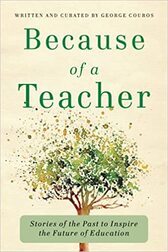
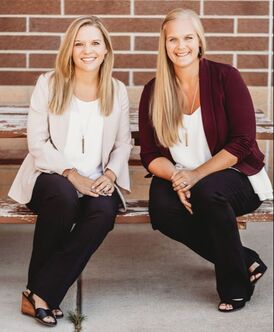
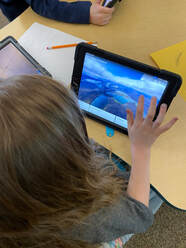
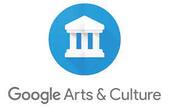
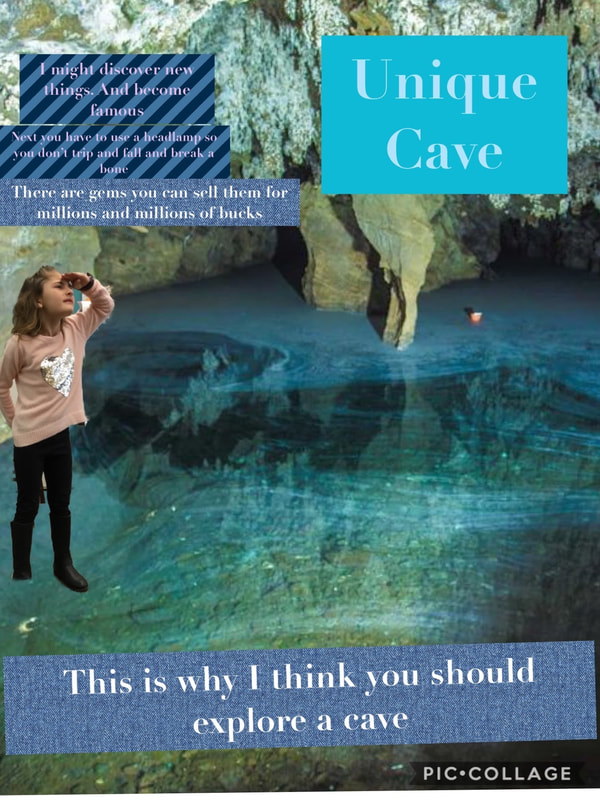

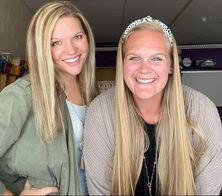
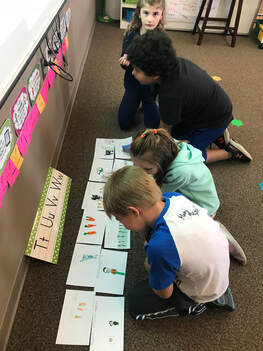

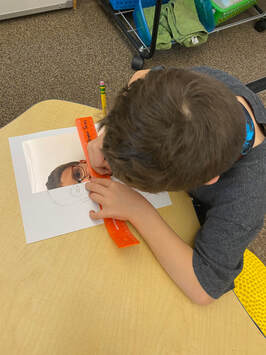

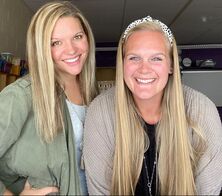

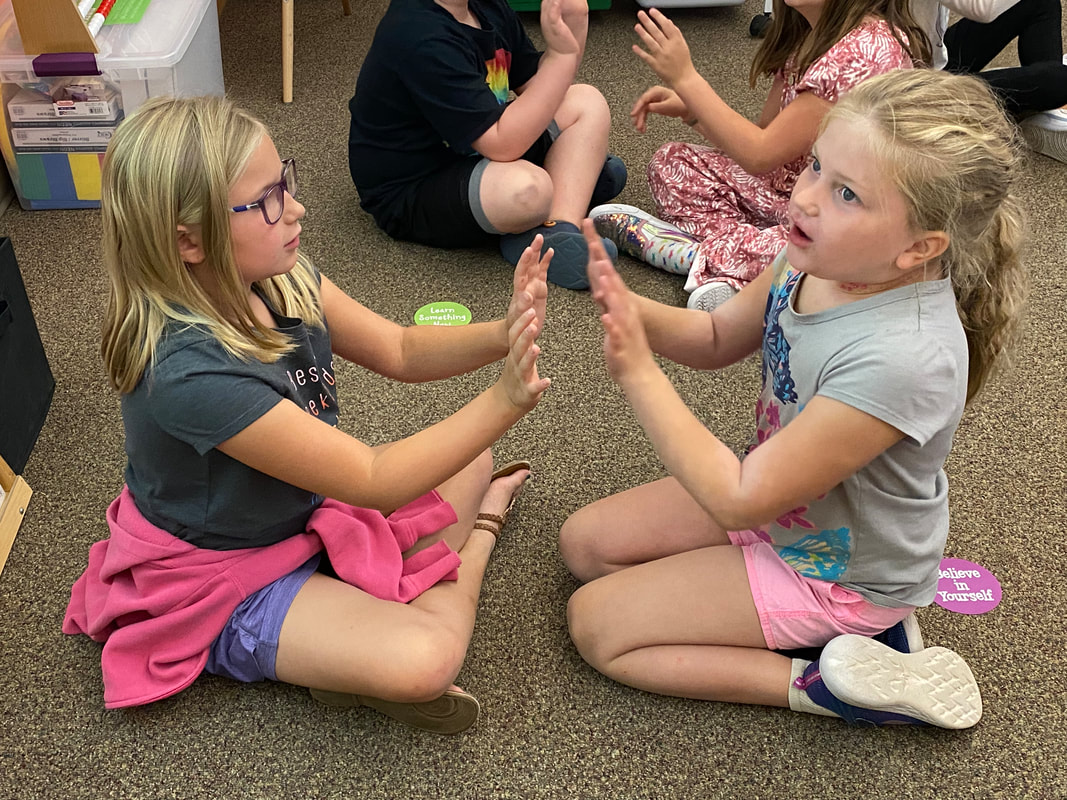
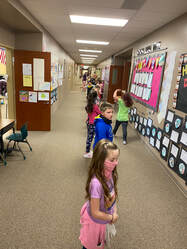
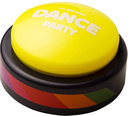
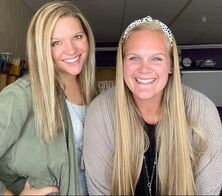
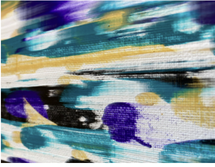
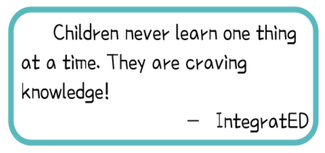


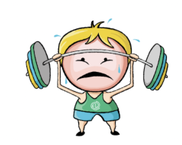
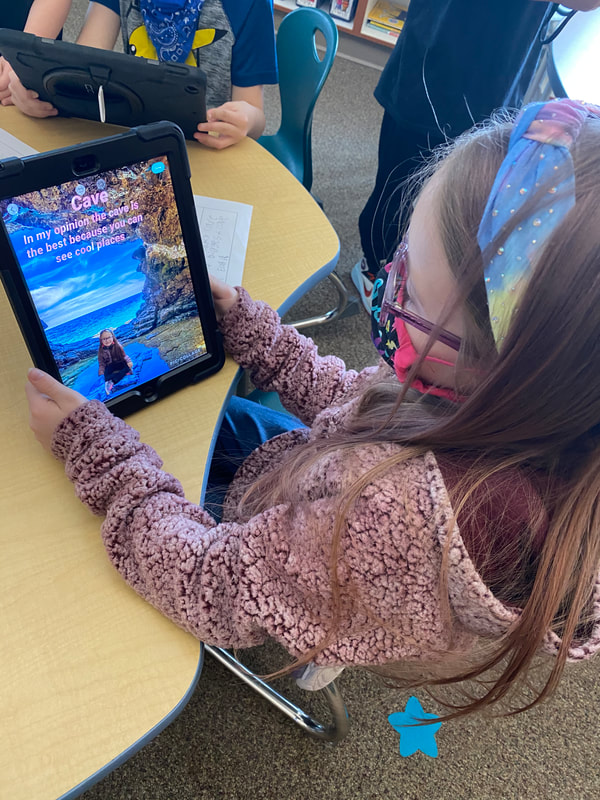

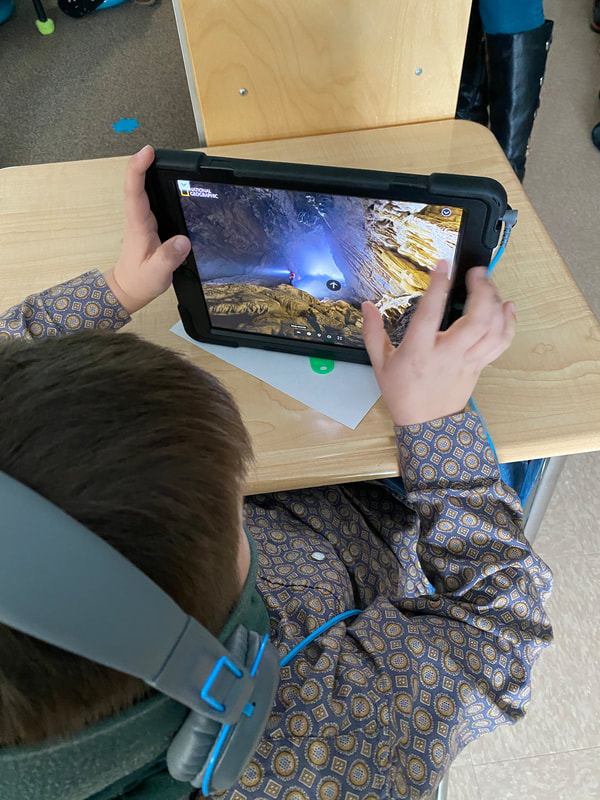

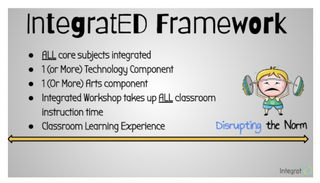
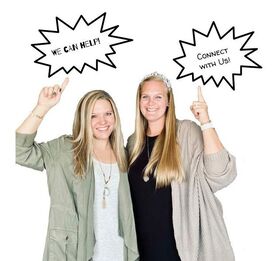
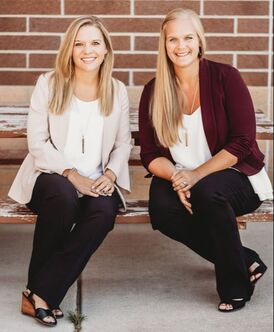
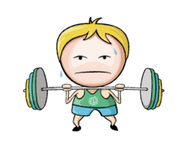
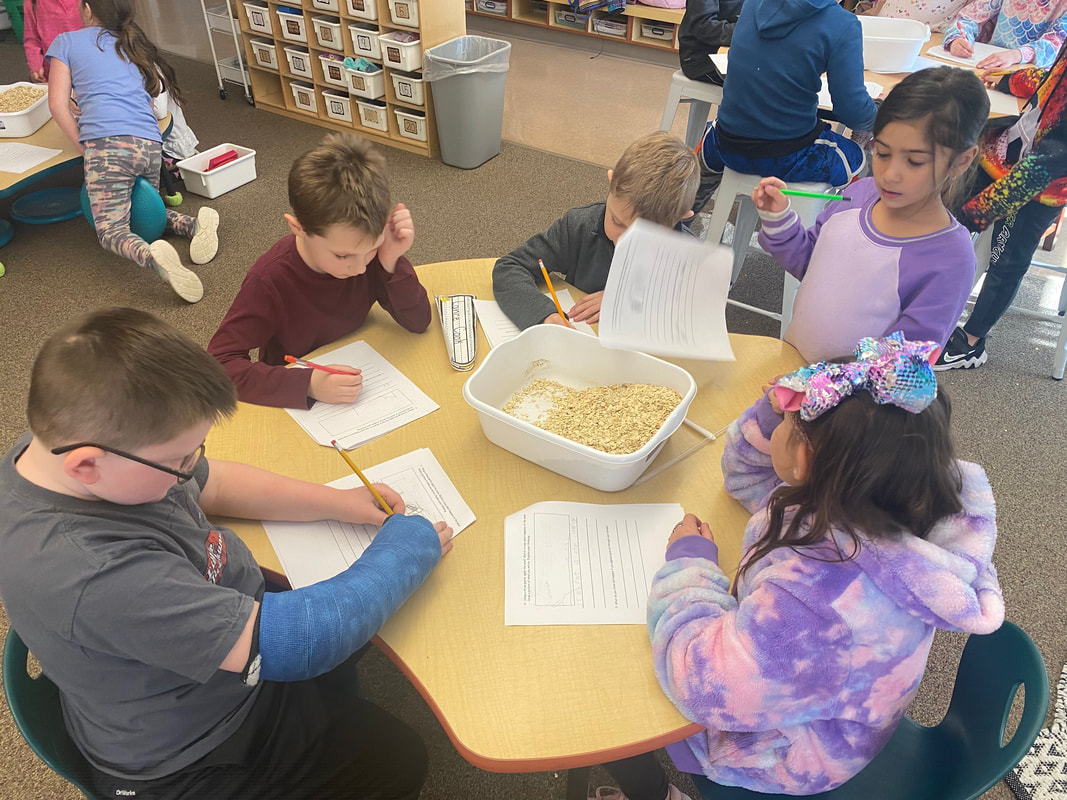
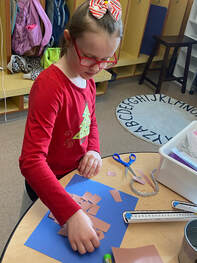

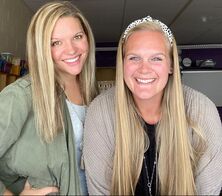

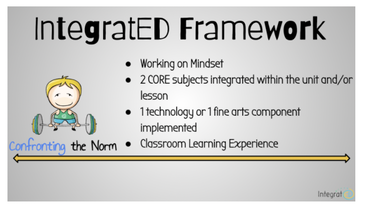
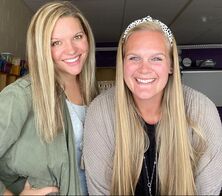

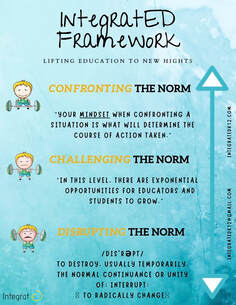

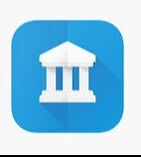
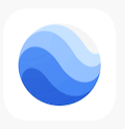
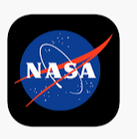
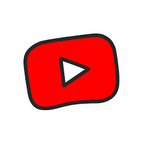

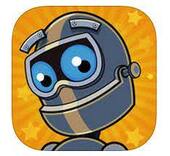


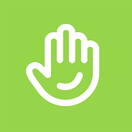
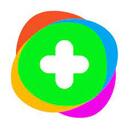



 RSS Feed
RSS Feed
